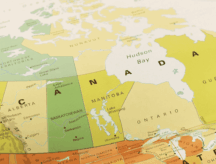How Canada may benefit from a broader immigrant settlement distribution
Canada is a country where immigrants have historically settled in three primary locations – Toronto, Vancouver, and Montreal.
In 2021, 29.5% of recent Canadian immigrants — those who came to Canada between 2016 and 2021 — landed in Toronto while 12.2% settled in Montreal and a shade less than that (11.7%) decided to call Vancouver their first Canadian home city.
This is a trend that has presented itself consistently over the last 50 years. For instance, census numbers going back to 1999 indicate that, in three different chosen years — 1999, 2001 and 2006 — over the last quarter-century, more than 68% of immigrants in each year decided to settle in those three cities.
Discover if You Are Eligible for Canadian Immigration
However, this reality is now starting to shift, according to the 2021 Canadian census.
What is happening across Canada?
Data from Statistics Canada’s most recent census indicates that “the share of recent immigrants who have settled in Canada's three largest urban centres [continues] to decline.” The percentage of landed immigrants settling in one of the three cities fell 2.6% — from 56.0% to 53.4% — over the five-year reporting period (2016 to 2021) for the latest census data. Montreal was the Census Metropolitan Area (CMA) that experienced the largest drop-off in total immigrant settlement, where the share of immigration dipped from 14.8% in 2016 to 12.2% in 2021.
Meanwhile, an increasing number of recent immigrants are choosing to settle outside of Toronto, Montreal, and Vancouver. In fact, the Ottawa-Gatineau region saw a 1.3% growth in immigrant settlement (3.1% in 2016 to 4.4% in 2021). Moreover, the CMA known as Kitchener-Cambridge-Waterloo nearly doubled its percentage of immigrants (1.2% to 2.1%) over the same time frame while over three percent of recent immigrants landed in both “small urban” (4.4%) and “rural” (3.2%) areas in 2021 as well.
On a larger scale, recent immigrants are also spreading out to different provinces across Canada. In 2021, five provinces saw their share of recent immigrants increase compared to previous censuses. Over the five-year reporting period included in the latest Canadian census, Ontario’s share of recent immigrants went up from 39% (2016) to 44% (2021). Over the same timeframe, immigration to British Columbia was up from 14.5% to 14.9%, while immigrant settlement also improved in Nova Scotia (1% to 1.6%), New Brunswick (0.8% to 1.2%) and Prince Edward Island (0.3% to 0.4%).
What does this new immigrant distribution mean for Canada?
For the very same reasons that Canada introduced its Provincial Nominee Programs (PNPs) in 1998, widespread immigration across Canada benefits the entire country through economic development in smaller regions of the country.
As more immigrants settle in diverse areas of Canada, either through one of 11 PNPs or another immigration pathway, these newcomers will help address labour market needs specific to the area they live in. Naturally, this will result in economic growth within those regions, as new immigrants become employed, earn money, and subsequently spend money that goes back into the economy. Evidence of this can be found in the reality that immigration is said to have contributed to 79.9% of Canada’s labour force growth between 2016 and 2021.
Additionally, newcomers will continue to pay taxes while spending money on housing, transportation, and other necessities, further allowing the economy to grow in the places across the country that are seeing a recent boom in immigration.
Ultimately, the growth experienced by these new immigrant settlement destinations across Canada will therefore benefit the country at large because more parts of Canada will become economically and developmentally prosperous, which will help strengthen Canada in its entirety.
Discover if You Are Eligible for Canadian Immigration
© CIC News All Rights Reserved. Visit CanadaVisa.com to discover your Canadian immigration options.
- Do you need Canadian immigration assistance? Contact the Contact Cohen Immigration Law firm by completing our form
- Send us your feedback or your non-legal assistance questions by emailing us at media@canadavisa.com






